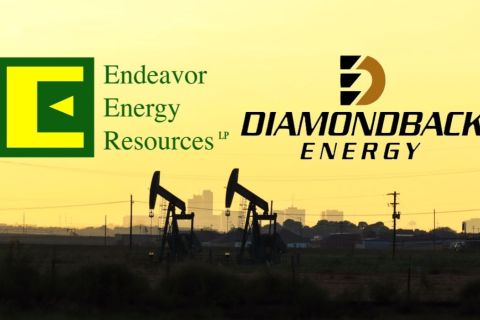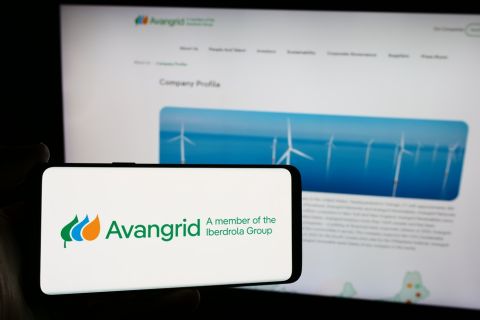
Editor's note: On March 15, Statoil announced it will be rebranding its name to Equinor.
For the Norwegian state-owned oil company Statoil, Brazil is an important strategic component of its portfolio worldwide. In fact, according to the major, the South American country’s oil and gas activities represent its most valuable business outside Norway and the company’s interests to expand its presence may increase over the next years.
Currently, the Norwegian major, which is the third largest operator in Brazil, carries out E&P activities in 10 offshore fields throughout the country. The Peregrino Field (BM-C-7), located in the Campos Basin, is the most prolific Statoil field outside Norway. The oil field produces about 80,000 barrels of oil per day (bbl/d), and it is estimated to hold between 300 MMbbl and 600 MMbbl of oil.
Recently, Statoil decided to make another big move, buying 25% interest in Roncador Field (BM-C-33), located in the Campos Basin, from the Brazilian state-owned oil company Petrobras. With the transaction, Statoil expects to triple its oil production in the country.
According to Statoil, Roncador can present attractive break-evens and potential for additional value creation for both parties through the application of Statoil’s expertise in improved oil recovery. The negotiation comprises an initial payment of US$2.35 billion, plus additional contingent payments of up to US$550 million.
Statoil’s biggest bet in Brazil is the giant Carcará Block (BM-S-8), which is divided between Carcará post-salt field, acquired through a transaction with Petrobras in 2016, and Carcará Norte, acquired in the latest Brazil’s presalt auction with ExxonMobil (40%) and Petrogal (20%), in 2017.
According to Statoil's latest Capital Markets Update report, it is believed that the entire structure (Carcará and Carcará North together) contains about 2 billion recoverable barrels of high quality oil with a carbon footprint that is below our corporate targets for 2030.
The amount of oil expected makes the company's Brazilian asset comparable to Johan Sverdrup Field in the North Sea on the Norwegian Continental Shelf, Jez Averty, Statoil’s exploration head for Britain and Norway, said in a recent interview with Reuters.
“We believe that this [Carcará Field] could be a very high-value asset. This has potential to be our [Johan] Sverdrup outside of Norway,” he said. It is estimated that the Norwegian oil field holds between 2 Bboe to 3 Bboe. According to Statoil, the Johan Sverdrup Field is expected to be one of the most important projects in Norway in the next 50 years.
In late February, the Statoil board announced that the first Carcará presalt oil will start production between the end of 2023 and the beginning of 2024. The Norwegian major also is working to contract services and equipment for the development. Three exploratory wells have already been drilled at the Carcará Field.
The company’s plan is to install an FPSO in the area, with a capacity greater than 100,000 bbl/d of oil. The exact size of the unit and the number of wells in the system have not been defined.
Some geological studies point out that once the FPSO installed in the field enters operation it might produce between 120,000 bbl/d and 180,000 bbl/d of oil.
The Carcará Block is near the Lula presalt field (BM-S-11), the largest oil-producing area in Brazil, which is expected to have between 5 Bbbl and 8 Bbbl of recoverable oil. Also, its estimates of a large amount of natural gas call attention for huge investments in the area. In 2017, the Lula field produced about 33.1 million cubic meters per day of natural gas.
“The presalt fields in the Santos Basin have already proved their high potential for natural gas discoveries and Statoil is aware of that. The company will demand investments not only in the E&P activities but also in logistics segment in order to offload natural gas output in Carcará area,” Federal University of Rio de Janeiro's Edmar Almeida said.
According to Statoil, those investments have already begun. The company revealed that it established a midstream and gas team in Brazil in 2017, as some of the projects contain large amounts of gas such as Carcará (associated gas).
Statoil also said that this group will use the company’s experience and knowledge of being a large gas producer in Europe.
“We have a mix of experts from Norway and local specialists exploring all the options related to the monetization of our gas, as well as establishing relationship with potential buyers and potential providers of pipelines,” Statoil said in a statement.
Recommended Reading
Matador Slashes Debt with $113MM Piñon Midstream Payout
2024-10-29 - Enterprise Products Partners closed its purchase of Piñon Midstream for $950 million on Oct. 28, earning Matador Resources $113 million for its roughly 19% ownership interest.
ONEOK’s EnLink/Medallion Deal is Market-wise, Financially Astute
2024-10-11 - In addition to bolstering its multi-basin network, ONEOK pulled off a $5.9 billion transaction while leaving its credit rating intact.
Apollo to Buy $1B Stake in BP’s Trans Adriatic Pipeline
2024-09-16 - Apollo will purchase the non-controlling interest from BP subsidiary BP Pipelines TAP Ltd. for $1 billion as the oil major continues to make progress on a divestment target of up to $3 billion.
Diamondback Closes $26B Endeavor Deal, Forming Last Permian ‘Sandbox’
2024-09-13 - Diamondback Energy’s merger with Endeavor Energy Resources forms a company with pro forma production of 468,000 bbl/d (816,000 boe/d) on total Permian acreage of about 838,000 net acres.
FERC Approves Iberdrola’s $2.6B Deal for Avangrid’s Shares
2024-09-06 - Iberdrola, which owns about 81.6% of Avangrid, said in May it would buy Avangrid’s remaining 18.4% stake, held in outstanding shares that Avangrid doesn’t own.
Comments
Add new comment
This conversation is moderated according to Hart Energy community rules. Please read the rules before joining the discussion. If you’re experiencing any technical problems, please contact our customer care team.






